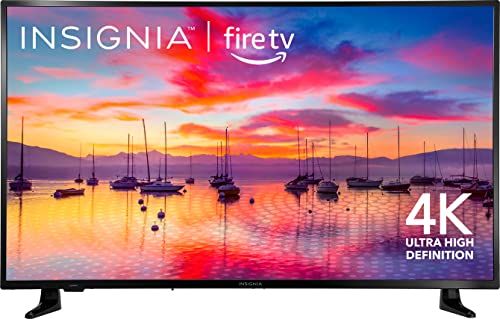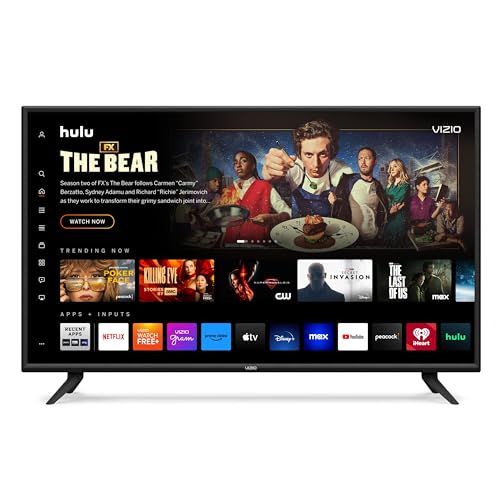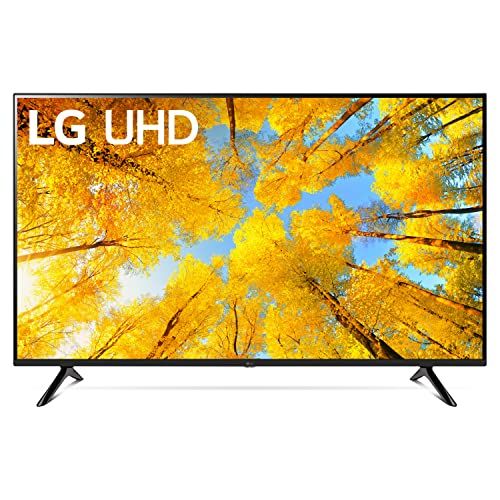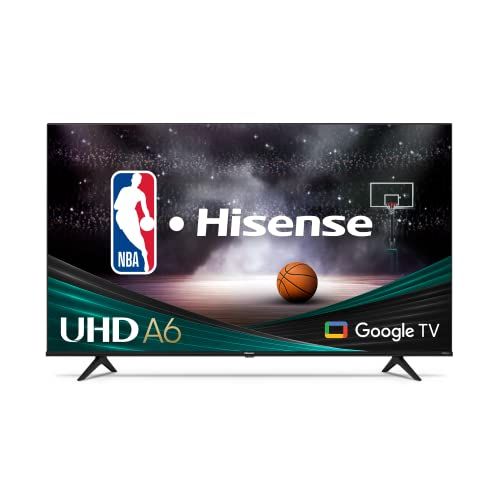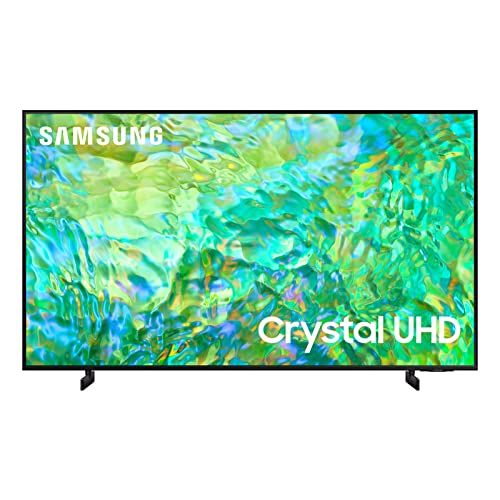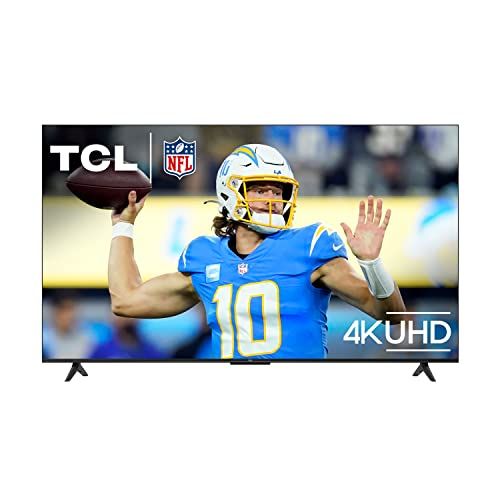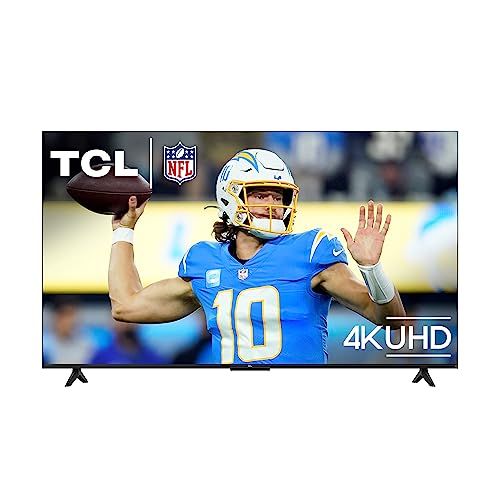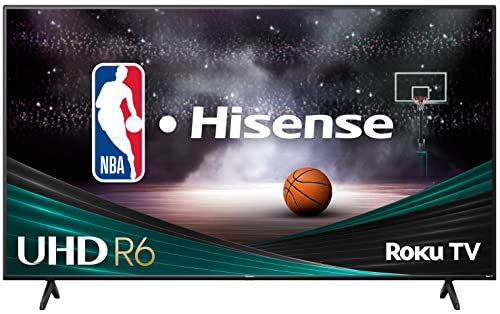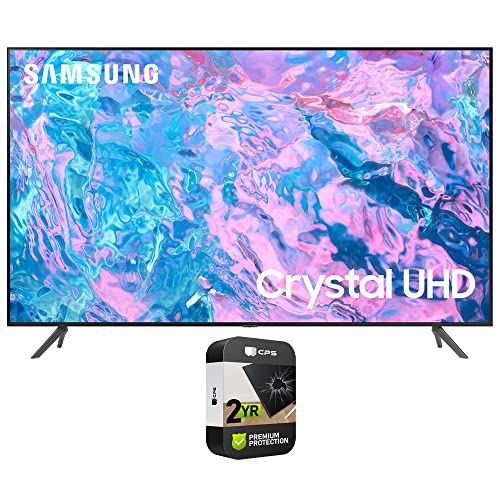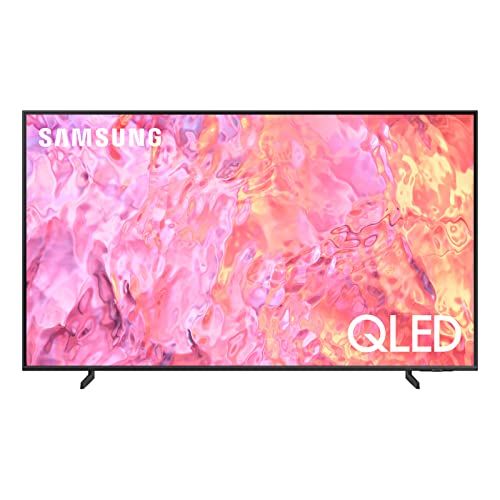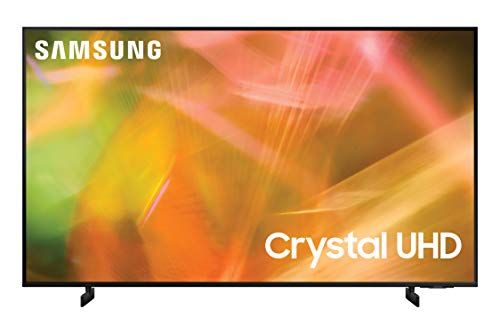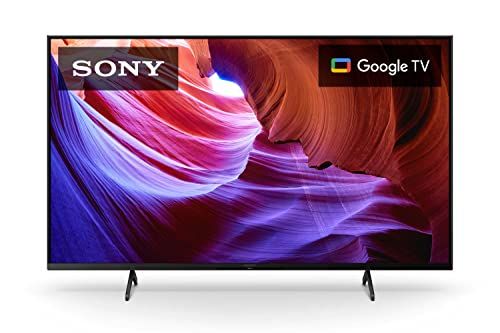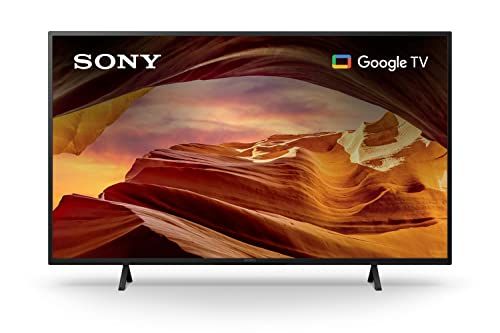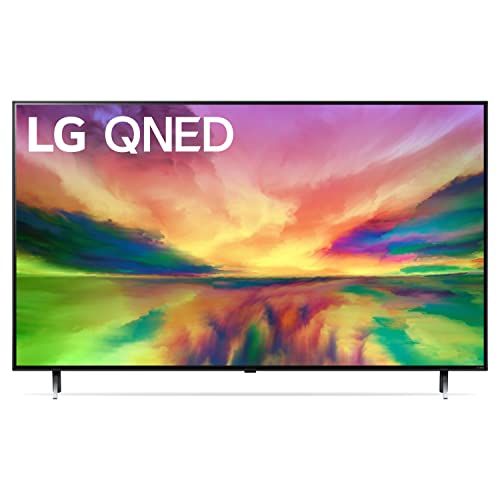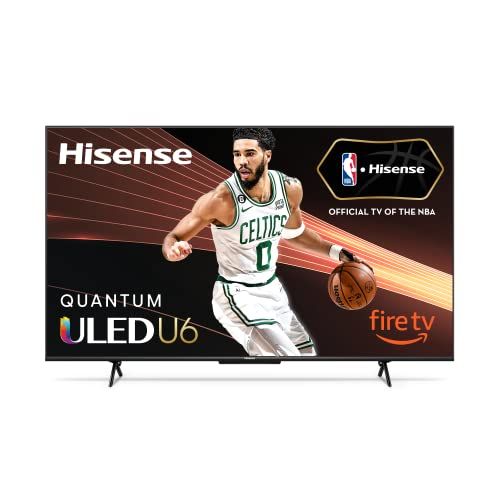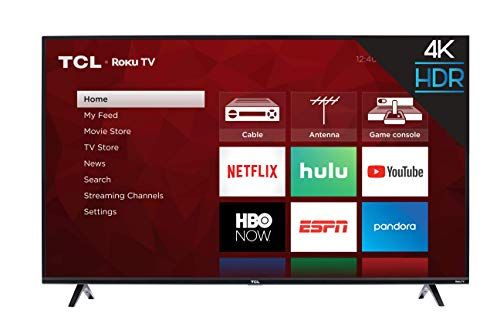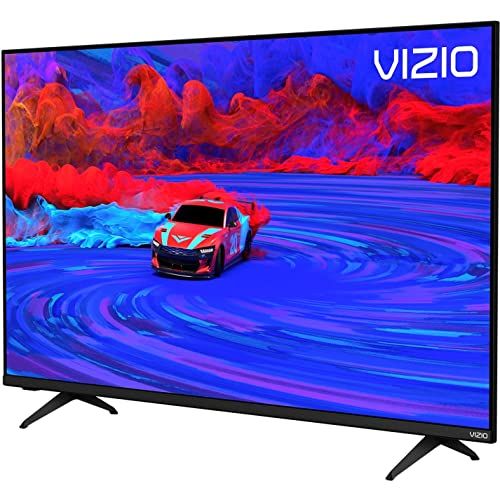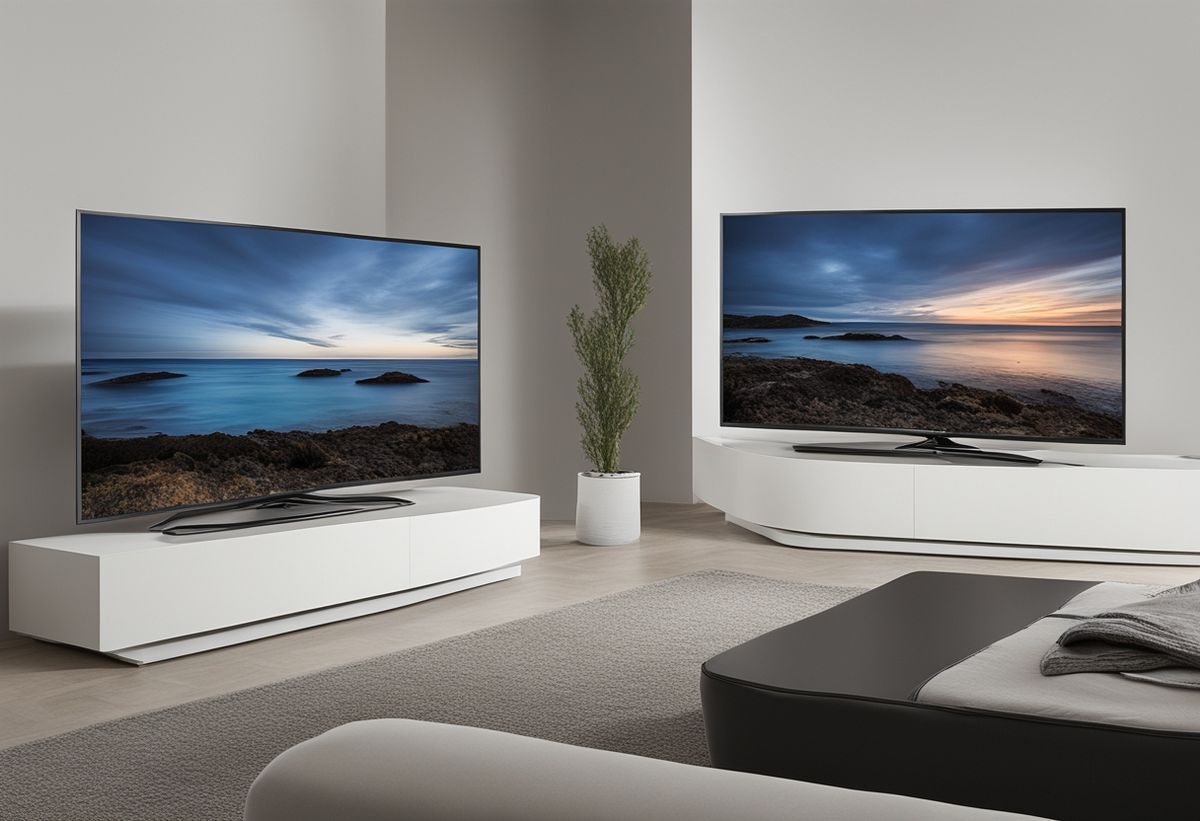
In recent years, 50 inch TVs have become one of the most popular TV sizes on the market. With large, immersive screens that can fit well in most living rooms, 50 inch TVs strike a great balance between size, price, and overall viewing experience.
The 50 inch class size (the actual diagonal screen measurement is a few inches smaller) represents a sort of sweet spot for home entertainment and has seen tremendous growth. As prices have come down and picture quality has improved across the board, 50 inch TVs now dominate as the most common screen size sold. Whether you're looking for an affordable 4K TV with all the bells and whistles or a simple budget set for the guest bedroom, there are tons of great 50 inch options at competitive prices from all the major brands.
With so many 50 inch TVs now available, it can feel overwhelming to sort through all the choices. But understanding a few key factors like resolution, smart features, and connectivity can help you identify the right model to suit your needs and budget. This guide will break down everything you need to know about today's 50 inch TV offerings.
Screen Size and Viewing Distance
A 50 inch TV provides an immersive viewing experience that is well-suited for most living rooms and entertainment spaces. The ideal viewing distance for a 50 inch screen is between 5 to 10 feet. This allows you to see all the details without excessive eye movement left to right.
Sitting too close to a 50 inch screen can lead to eye strain as your eyes struggle to take in the entire scene. Sitting too far reduces immersion. Most interior designers recommend choosing your seating distance first, then selecting your TV size. A 50 inch screen pairs well with a couch about 8 to 9 feet away.
Resolution and Picture Quality
A 50 inch TV with 4K resolution (3840 x 2160 pixels) will provide an incredibly detailed picture, with 4 times the number of pixels compared to 1080p Full HD resolution. This high resolution allows you to sit closer to the screen without noticing pixelation.
4K resolution becomes especially important on larger screen sizes like 50 inches, where the additional pixels will be more noticeable and text/images will appear sharper. When shopping for a 50 inch TV, 4K resolution should be considered a minimum requirement to get a future-proof TV that takes full advantage of the large screen.
In addition to 4K resolution, look for a 50 inch TV with HDR (High Dynamic Range) technology. HDR increases the color depth and contrast ratio significantly. It makes colors more vivid and realistic, while also enhancing details in shadows and highlights. HDR is essential for getting the most out of 4K resolution and provides a more immersive viewing experience. Popular HDR formats to look for include HDR10, HDR10+, and Dolby Vision.
With a combination of a large 50 inch screen, 4K resolution, and HDR, you'll be treated to an exceptional level of picture detail and quality that does justice to the TV's size. This will make movies and shows come alive on your TV with incredible clarity, depth, and realism.
Smart TV Features
A 50-inch TV lets you take full advantage of smart TV capabilities. Smart TVs come with built-in WiFi and apps that let you access popular streaming services like Netflix, Hulu, Disney+, and more without the need for additional streaming devices.
Most 50-inch smart TVs today come with voice assistants like Amazon Alexa and Google Assistant built-in. This allows you to change channels, adjust volume, search for content, and more completely hands-free using voice commands. Some TVs even include far-field microphones that can pick up your voice from anywhere in the room.
In addition to streaming and voice control, smart TVs include features like casting, screen mirroring, and access to app stores for downloading new apps and games. Some models have gesture control, allowing you to navigate the TV with hand motions detected by the TV's camera.
With a 50-inch smart TV, you'll be able to seamlessly access all the entertainment options the internet has to offer right on the big screen. The latest models make finding and enjoying content easier than ever.
Connectivity and Ports
When choosing a 50-inch TV, you'll want to consider the type and number of ports it includes. This will determine what devices you can connect and how easily you can access streaming content and external media.
HDMI ports - HDMI has become the standard port for connecting devices like Blu-ray players, gaming consoles, and streaming sticks. Most 50-inch TVs will have 3-4 HDMI ports. This allows you to connect multiple devices without needing to unplug and swap cables. The more HDMI ports, the more devices you can have connected simultaneously.
USB ports - USB ports allow you to connect devices like external hard drives to play media files, or plug in peripherals like keyboards. Look for TVs with at least 2 USB ports. USB 3.0 is better for higher speed data transfer from storage devices.
Ethernet port - An ethernet port gives you the ability to connect directly to your home network and internet router with a network cable. This can provide faster, more reliable internet connectivity for smart TV apps compared to using WiFi. Just make sure your router is located relatively close by.
Paying attention to the number and type of ports will ensure your new 50-inch TV can handle all the devices and connectivity options you need. Prioritize HDMI ports, followed by a couple USB inputs, and an ethernet jack for the most versatility.
Audio Quality
Audio is a critical part of the TV viewing experience. With a 50-inch TV, you'll want a sound system that can fill your living room with clear audio.
Many 50-inch TVs now come equipped with impressive speaker systems and audio technologies:
Surround sound - Many 50-inch TVs support surround sound technologies like Dolby Atmos for an immersive audio experience. Surround sound places audio in different channels around the room, so you feel like you're right in the middle of the action.
Soundbars - Many 50-inch TV models have built-in soundbars with multiple speakers to create a wider soundstage. Soundbars with additional wireless surround speakers can create surround sound.
Dolby Atmos - Dolby Atmos audio utilizes overhead speakers to create a 360-degree sound field. Models with Dolby Atmos speakers built into the TV can bounce sound off the ceiling for overhead audio effects.
DTS:X - Similar to Dolby Atmos, DTS:X is an object-based surround sound technology for immersive 3D audio. Some models may support DTS:X for a theater-like experience.
EQ Settings - Many 50-inch TVs come with equalizer (EQ) settings to adjust the audio frequency response. This allows you to customize the sound quality to your preference.
Paying attention to the audio specs and technologies can help you choose a 50-inch TV with sound quality on par with its brilliant visuals. Powerful built-in speakers or support for surround sound can make movies and shows come alive in your living room.
Design and Thinness
Slim and thin designs are very desirable for modern 50-inch TVs. Customers want their TVs to look sleek and blend into the home decor seamlessly.
The race for the thinnest TVs started several years ago, with manufacturers competing to shave off millimeters on their flagship models. Now most new 50-inch TVs are remarkably thin, with some as slim as just a few millimeters at their thinnest point.
Super-thin panel designs are achieved by doing away with bulky rear casings and using advanced LED backlight technology. Edge-lit LED TVs have all the backlight LEDs arranged along the edges, allowing the panel to be incredibly thin.
Aesthetically, thin bezels surrounding the display also help TVs look more streamlined and modern. Many 50-inch sets now have bezels just a few millimeters thick.
While slim profiles look stunning, they can also make wall mounting easier with less space taken up. Thinner TVs tend to cost more, but the ultra-trim form factor adds to the appeal for many buyers.
Brands and Models
When it comes to 50-inch TVs, there are several top brands to consider. These include:
Samsung
Samsung is one of the leaders in the TV market. Their 50-inch models span a wide range of prices and include:
Samsung QN50Q60AAFXZA - A QLED model with excellent picture quality and smart TV capabilities. Priced around $650.
Samsung UN50AU8000FXZA - A more budget-friendly LED TV with good picture and smart features. Priced around $450.
Samsung QN50QN90AAFXZA - A high-end Neo QLED with advanced features like mini-LED backlighting. Priced around $1300.
LG
LG is another top brand for TVs. Some of their current 50-inch options include:
LG 50NANO75UPA - A mid-range 4K LED TV with good performance. Priced around $550.
LG 50NANO85UPA - A step-up NanoCell TV with enhanced contrast and color. Priced around $800.
LG OLED50C1PUA - An OLED TV with exceptional picture quality and thin design. Priced around $1200.
Sony
Sony TVs are known for their impressive picture processing. Consider these models:
Sony X85J - An affordable 4K LED TV with Sony's cognitive processor for upscaling and smoothing. Priced around $700.
Sony X90J - A brighter LED TV with advanced gaming features. Priced around $1000.
Sony A9S - An OLED TV and Sony's flagship with high-end features. Priced around $1800.
TCL
TCL provides budget-friendly options like:
TCL 50S535 - A 4K smart Roku TV with good overall performance for under $500.
So in summary, leading brands for 50-inch TVs include Samsung, LG, Sony, and TCL, with models ranging from budget picks to high-end OLED and QLED options over $1000.
Prices
50 inch TVs cover a wide range of prices to meet different budgets and needs. Here's an overview of the price ranges you can expect:
Budget models - $300 to $500 - These affordable 50 inch TVs from brands like TCL, Hisense and Vizio offer decent picture quality and smart features. They use more basic LCD/LED display panels and lower resolutions like 720p or 1080p. Great options for secondary rooms or basic home theater setups.
Mid-range models - $500 to $1000 - Stepping up in this range gets you better display panels, 4K resolution, more premium designs and feature sets from major brands like Samsung, LG and Sony. Excellent balance of price and performance for most buyers.
High-end models - $1000 to $2000 - Premium 50 inch TVs from top brands loaded with the latest display technologies like OLED, QLED or mini-LED. Feature rich smart platforms and connectivity. Sleek, ultra thin designs. Targeted at home theater enthusiasts and those wanting the best image quality.
Flagship models - $2000+ - Cutting edge, high-end 50 inch TVs with bespoke designs and proprietary display tech. Boast the most advanced processors and deepest black levels. Geared towards luxury buyers less concerned about price. Some models as expensive as $10,000+.
The price range gives you flexibility to find a 50 inch TV matching your viewing needs and budget. Carefully compare models across price tiers to get the right mix of performance, features and price.
Conclusion
50 inch TVs offer an immersive viewing experience while fitting well in medium to large living spaces. With a screen size of around 50 inches diagonally, they provide ample screen real estate for enjoying movies, sports, and games from a reasonable distance of 5-15 feet.
Most modern 50 inch TVs come with 4K resolution and HDR support for incredible picture detail and vibrant colors. Smart TV platforms like Android TV and webOS provide access to popular streaming apps and voice controls. Connectivity options like HDMI ports, USB, Bluetooth, and WiFi allow you to connect various devices and peripherals.
Higher-end 50 inch TVs feature advanced display technologies like OLED for perfect blacks and wide viewing angles. They also offer premium audio with support for Dolby Atmos. Most major brands like Samsung, Sony, LG, and Vizio offer 50 inch TV models across a wide range of prices from budget to high-end.
When choosing a 50 inch TV, consider your viewing distance, resolution needed, smart TV capabilities, and connectivity options. Look at TV reviews and technology like backlighting, refresh rates, and contrast ratios. For most living room setups, a 50 inch 4K TV from a reputable brand provides an outstanding balance of size, performance and value.
50 inch TVs comparison
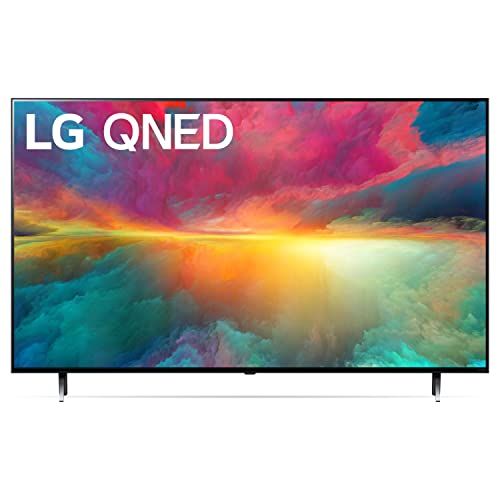 | 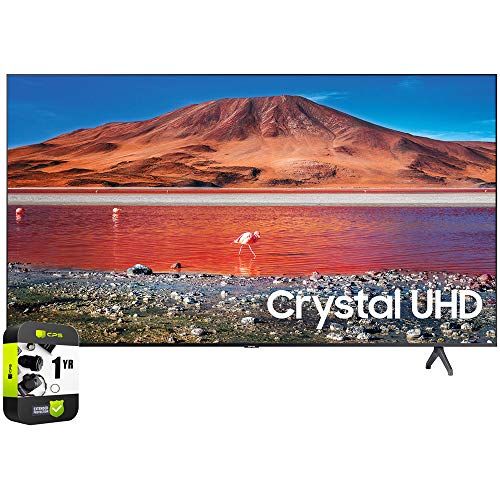 | 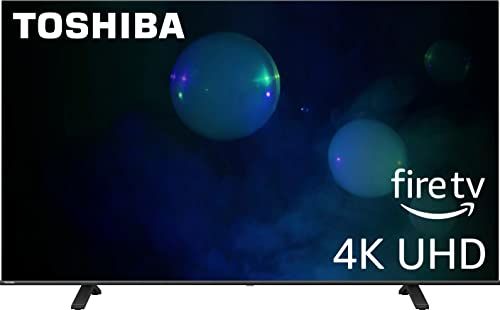 | 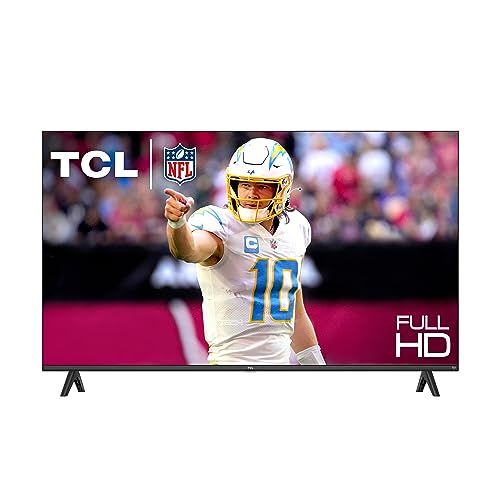 | 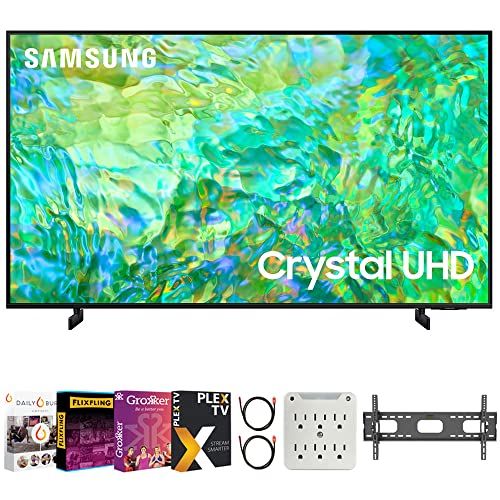 | |
|---|---|---|---|---|---|
| Model | LG 50QNED75URA | SAMSUNG UN50TU7000FXZA | Toshiba 50C350LU | TCL 40S350F | SAMSUNG UN50CU8000 |
| Brand | LG | SAMSUNG | Toshiba | TCL | SAMSUNG |
| Display technology | QNED | LED | LED | LED | LED |
| Resolution | 4K | 4K | 4K | 1080p | 4K |
| Screen size | 50 Inches | 49.5 Inches | 50 Inches | 40 Inches | 49.5 Inches |
| Refresh rate | 60 | 60 Hz | - | 60 Hz | 60 Hz |
| Dimensions | 10.1"D x 44.1"W x 28.3"H | 9.8"D x 44"W x 28.1"H | 9.7"D x 44"W x 28"H | 3.6"D x 35.7"W x 20.3"H | 8.9"D x 44"W x 27"H |
| Special feature | AI Picture, AI Upscaling, HDR, FILMMAKER MODE, Picture Processor, Dynamic Tone Mapping, Dimming Technology AI Picture, AI Upscaling, HDR, FILMMAKER MODE, Picture Processor, Dynamic Tone Mapping, Dimming Technology See more | Smart TV Powered by Tizen; HDR; Crystal Display; Eco Sensor; Works with Google Assistant/Alexa | Flat | Bezel-Less Design | Contrast Enhancer; HDR; Motion Xcelerator; Works with Google Assistant and Alexa, Dynamic Crystal Color; Crystal Processor with 4K Upscaling; AirSlim Design Contrast Enhancer; HDR; Motion Xcelerator; Works with Google Assistant and Alexa, Dynamic Crystal Color; Crystal Processor with 4K Upscaling; AirSlim Design See more |
| Special features | AI Picture, AI Upscaling, HDR, FILMMAKER MODE, Picture Processor, Dynamic Tone Mapping, Dimming Technology | Smart TV Powered by Tizen; HDR; Crystal Display; Eco Sensor; Works with Google Assistant/Alexa | - | Bezel-Less Design | Contrast Enhancer; HDR; Motion Xcelerator; Works with Google Assistant and Alexa, Dynamic Crystal Color; Crystal Processor with 4K Upscaling; AirSlim Design |
| Weight | 31.7 Pounds | 25.6 Pounds | - | 16 Pounds | 31 Pounds |
| Country of origin | - | - | - | China | - |
| Speaker type | Built-In | 2CH | - | Built-In | 2CH |
| Included components | Power Cable, Remote Control, Stand | Stand, TV, Power Cable, Remote | Stand, TV, Remote | Stand, Remote Control, 2x Remote Control Batteries, Power Cord, Quick Start Guide | Smart |
| Supported services | Netflix, HBO Max, Prime Video, Disney Plus and More, Apple TV | Browser | Browser | Netflix | Netflix |
| Price | - | $499 | $259.99 | $149.99 | $549 |
FAQ
What is the typical size of a 50 inch TV?
A 50 inch TV has a screen size that measures 50 inches diagonally. This is a common large screen TV size.
What resolution can I expect with a 50 inch TV?
Most new 50 inch TVs today have 4K resolution, which is 3840 x 2160 pixels. High-end models may have even higher 8K resolution.
What types of 50 inch TVs are available?
You can find 50 inch TVs with different display types like LED, OLED, QLED or LCD. LED and LCD are the most common and affordable options.
Should I mount my 50 inch TV on the wall?
Wall mounting a 50 inch TV is recommended to save space and for a clean, modern look. You should ensure the mount is rated to hold the weight safely.
How far should I sit from a 50 inch TV?
Ideally, you should sit 5-15 feet away from a 50 inch TV for the best viewing experience, depending on the resolution. Sitting too close may cause eye strain.
What smart TV platforms are available for 50 inch TVs?
Most 50 inch smart TVs run operating systems like Roku TV, Amazon Fire TV, Android TV, LG webOS or Samsung Tizen. This allows you to stream content and apps.
Do I need any special cables for a 50 inch 4K TV?
To view 4K content on a 50 inch TV, you will need an HDMI cable capable of handling the higher bandwidth, such as HDMI 2.0 or higher.
How much power does a 50 inch TV use?
A 50 inch LED TV generally uses between 80-150 watts depending on the specific model. Higher-end models with more features may use more.
What is the average price range for a 50 inch TV?
The average price range for a new 50 inch TV is $400-$800. High-end models with OLED or advanced features can cost $1,500+
What size entertainment stand do I need for a 50 inch TV?
Most 50 inch TVs require an entertainment stand at least 50 inches wide. Make sure to measure your space to get a stand that fits the TV size.
